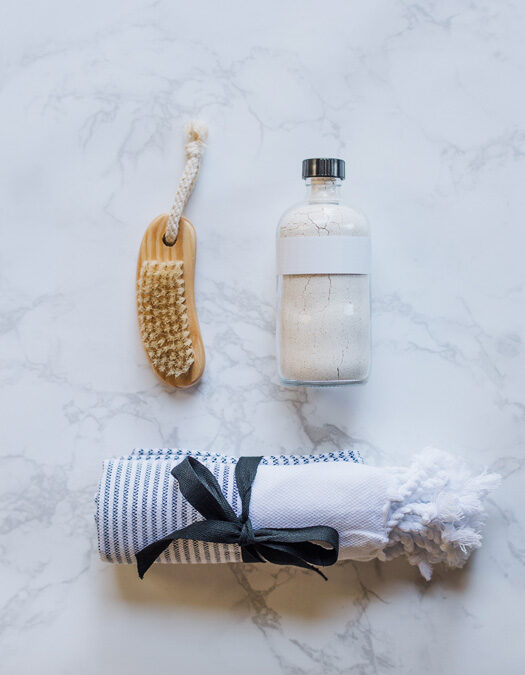Gone are the days when you had to choose between gold or silver and stick with it forever. Today’s style rules are far more relaxed — and mixing metals is not just allowed, it’s chic.
If you’ve ever hesitated to pair your favorite gold bracelet with your silver watch, this guide is for you. We’ll break down why mixing metals works, how to do it like a stylist, and the easiest ways to start experimenting with confidence.
Why Mixing Metals Is In
For decades, fashion advice warned against mixing metals, insisting you should commit to one color for a “cohesive” look. But modern style celebrates individuality — and mixed-metal looks feel fresh, creative, and intentional.
Here’s why you should try it:
- It’s effortless: You don’t need a perfectly matching set for every outfit.
- It’s versatile: You can wear your favorite pieces together, regardless of color.
- It’s fashion-forward: Layering gold and silver feels curated and editorial.
Whether you love warm gold tones, cool silver, or even trendy rose gold, mixing metals lets you create a look that’s uniquely yours.
The Basics: Gold, Silver, and Beyond
Before you start mixing, it helps to understand your “palette”:
- Yellow Gold: Warm and classic — pairs beautifully with earthy tones and neutral outfits.
- White Gold / Silver: Cool and sleek — great with monochrome, black, or jewel tones.
- Rose Gold: Soft and romantic — acts as a bridge between gold and silver.
- Mixed-Metal Pieces: Jewelry that already blends metals is perfect for tying your look together.
Knowing the tone of each metal helps you create intentional combinations.
Step 1: Pick a Dominant Metal
The easiest way to start mixing is by choosing a dominant metal — the one you wear the most of — and then adding an accent metal.
For example:
- Wear a gold necklace and bracelet, then add a single silver ring for contrast.
- Start with a silver watch and earrings, then layer in a gold pendant necklace.
This keeps your look cohesive while still embracing the mix.
Step 2: Layer Like a Stylist
Layering is where mixed-metal magic happens. Here’s how to do it right:
Necklaces
- Combine different chain lengths (short, mid-length, and long) so they don’t tangle.
- Alternate gold and silver chains for a balanced look.
- Add a pendant or charm necklace to create a focal point.
Bracelets
- Stack thin bangles or chain bracelets in alternating metals.
- Include one mixed-metal piece (like a two-tone watch) to tie the look together.
Rings
- Try stacking a few thin gold and silver bands on the same finger.
- Wear one bold statement ring in one metal and keep the rest minimal in another.
Step 3: Balance Proportions
Mixing metals works best when there’s a sense of balance.
- Equal distribution: Don’t wear all gold on one hand and all silver on the other — spread the mix across your look.
- Match finishes: Shiny with shiny, matte with matte. This makes the combo look deliberate.
- Limit to two or three metals: Gold + silver is a classic combo, but you can also add rose gold for a softer third tone.
Step 4: Use a Bridging Piece
The secret weapon of stylists? Mixed-metal jewelry that combines gold and silver in one piece.
Examples include:
- Two-tone watches
- Bracelets with alternating gold and silver links
- Necklaces with mixed pendants
These pieces act as a natural “bridge” between metals, making the whole look cohesive.
Step 5: Style by Occasion
You can mix metals for any setting — but adjust your approach depending on where you’re going:
- Office: Keep it subtle with a silver watch, gold hoops, and a delicate gold bracelet.
- Casual Day Out: Have fun stacking bracelets and layering necklaces with multiple metals.
- Evening Events: Go bolder — a statement gold cuff paired with silver drop earrings feels fashion-forward.
Step 6: Consider Your Outfit
Your clothes can influence how your mixed metals look.
- Neutral Outfits (white, black, beige): Perfect canvas for bold metal mixing.
- Warm-Toned Outfits (brown, rust, cream): Let gold be the dominant metal, with silver as an accent.
- Cool-Toned Outfits (navy, gray, black): Lead with silver, then add pops of gold.
Common Mistakes to Avoid
- Overloading: Too many pieces can look cluttered. Choose a few focal points.
- Ignoring Skin Tone: While rules are flexible, gold flatters warm undertones and silver suits cool undertones — use this to your advantage.
- Mismatch of Styles: Don’t mix overly ornate vintage pieces with ultra-modern minimalist ones unless done intentionally.
Beginner-Friendly Combos to Try
If you’re new to mixing metals, here are some foolproof pairings:
- Gold Pendant Necklace + Silver Stud Earrings + Gold & Silver Bracelet Stack
- Silver Watch + Gold Thin Bangles + Mixed-Metal Ring
- Rose Gold Hoop Earrings + Gold Chain Necklace + Silver Stacking Rings
Final Thoughts
Mixing metals isn’t just a trend — it’s a way to wear your favorite jewelry pieces together without worrying about “matching.” By picking a dominant metal, layering thoughtfully, and using bridging pieces, you can create a look that feels effortless yet elevated.
So go ahead: wear that silver watch with your gold bracelet. Stack those rings in mixed metals. The key is confidence — because when you feel good, your style shines.
Chloe

